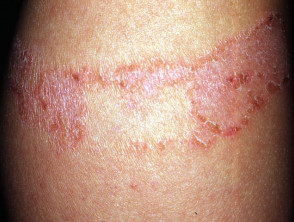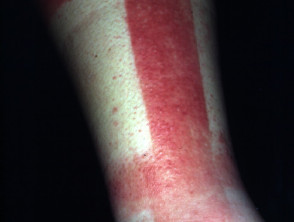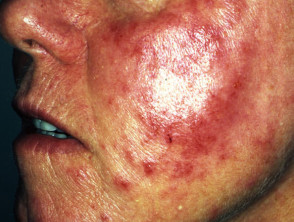What is rosin and where is it found?
Rosin, also known as colophony, is the sap or sticky substance that comes from pine and spruce trees. Its stickiness lends itself to being used in a wide range of products. The table below shows only some of the many products that contain rosin we may come into contact with either at home or at work.
| Home/recreational sources | Work sources |
|
|
What are the reactions to rosin allergy?
Reactions to contact with rosin in an allergic individual include acute allergic contact dermatitis and difficulty breathing. In allergic contact dermatitis, dermatitis tends to occur 1-3 days after contact with rosin, although occasionally reactions can appear within 24 hours or even more than a week after exposure. Dermatitis tends to be confined to the site of contact with rosin (e.g. hands and forearms after carrying pine wood, although the face may also be involved). Initially, the skin becomes red and inflamed and is generally itchy. As the reaction progresses it may blister and become even more intensely itchy. If exposure is continued, dermatitis may eventually become chronic with thickened, lichenified skin.
Am I allergic to rosin?
Rosin allergy is diagnosed from the clinical history and by performing special allergy tests, which are called patch tests.
If you want to self-test a product for rosin, you can test a small area of your skin using the repeat open application test (ROAT). Many chemicals are, however, very irritant, so great care must be taken. Discuss this with your dermatologist first. Apply a very small amount of the product in question to a small area of skin such as the bend of your arm twice daily for seven days. If, after applying the product for 7 days consecutively, there has been no reaction, it is unlikely you are allergic to the product. However, you may still develop an irritant or intolerance reaction to the product.
Treatment of rosin allergy
Avoidance is the only long term treatment of allergy. There is no mechanism for de-sensitising to rosin. Once dermatitis appears on the skin, treatment is as for any acute dermatitis/eczema, with topical corticosteroids, emollients, and treatment of any secondary bacterial infection (Staphylococcus aureus).
What should I do to avoid rosin allergy?
The best way to avoid colophony allergy is by being aware of products that contain rosin. Look for the list of ingredients on the product labels or packaging of all substances you come into contact with, not just the ones you think you might be reacting to. If necessary contact the manufacturer of the product or cosmetic. Avoid products that do not list all the ingredients.
If you must use products that contain rosin, wear gloves or other protective clothing to avoid contact with your skin. Your dermatologist may have further specific advice, particularly if you are highly sensitive to rosin.
Alternative names for rosin
Rosin is also known by several other names. These include:
- Colophonium
- Colophony
- Resin terebinthinae
- Tall oil
- Abietic acid
- Methyl abietate alcohol
- Abietic alcohol
- Abietyl alcohol.
Avoid all of these. At work, request a material safety data sheet to help identify alternatives that are safe hence avoiding contact with material containing rosin.
Further information
CAS number: 8050-09-7
Cross-reactions:
- Balsam of Peru
- Dihydroabietyl alcohol
- Wood tars
- Pine resin
- Spruce resin
- Oil of turpentine
Significant cross-reactivity is excited between propolis, fragrance, and colophony.
Appearance:
Yellow resin. 90% resin acids (mostly abietic acid), 10% neutral matter
Sensitizer:
Main sensitisers are abietic acid and abitol.
Patch Test:
20% in petrolatum
| Sources of Exposure to Rosin | ||
|---|---|---|
|
|
|


